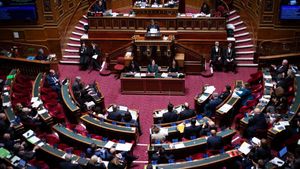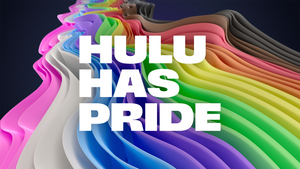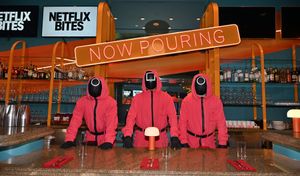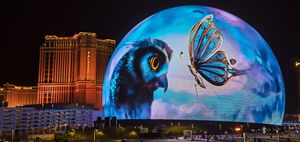Popnography
CONTACTAbout UsCAREER OPPORTUNITIESADVERTISE WITH USPRIVACY POLICYPRIVACY PREFERENCESTERMS OF USELEGAL NOTICE
© 2025 Pride Publishing Inc.
All Rights reserved
All Rights reserved
By continuing to use our site, you agree to our Private Policy and Terms of Use.
While Hollywood's great push for 3-D projection seems relatively recent, the technology is by no means new. In fact, the first attempt to provide moviegoers with another dimension dates back to the 1950s. Threatened by the advent of television, movie studios believed that large spectacles would draw audiences away from their living rooms and into theaters. Therefore, about forty-five 3-D features were released between 1952 and 1955.
In New York City, the Film Forum theater, a nonprofit venture committed to showing a diverse array of quality cinema, is reopening the vault, screening fifteen 3-D features between now and August 26. The eclectic collection promises gorilla suits, dance numbers, surgical scalpels, and Grace Kelly as you've never seen them before. The fantastic line-up includes Hitchcock's Dial M For Murder, Andre de Toth's horror classic House of Wax, and George Sidney's Kiss Me Kate.
While modern 3-D systems utilize a single digital projector, in the 1950s two synchronized, 35-mm projectors running side-by-side created the illusion of depth. Though the images were extremely crisp (35-mm has a higher resolution than digital), 1950's 3-D was difficult to maintain, as a slight slip could lead to the illusion falling apart. Thus, Film Forum's programmer and projectionist Bruce Goldstein has his work cut out for him to ensure that both projectors remain perfectly in synch.
Trending stories
Though I tend to share Ebert's opinion about the latest 3-D trend, how can I miss the chance to wear "super-cool" glasses and watch hilariously cheesy classic films?
-- NICK STERGIOPOULOS
Previously > More Glee News: Britney, George Michael, and the Beatles
























































